RU plays away to Indiana University next Saturday.
Before You Go. Bloomington, Indiana is further south than Atlantic City. Despite being in the Midwest, it is not on a Great Lake, bringing strong winds and "lake effect snow." So the weather won't be substantially different from what we get in the Middle Atlantic States. The website of the Indianapolis Star is predicting high 40s for next Saturday afternoon, and low 30s for the evening. Bring a winter jacket.
Indiana used to be 1 of 2 States, Arizona being the other, where Daylight Savings Time was an issue; however, since 2006 -- 4 years after a West Wing episode lampooned this -- the State has used it throughout. There will be no need to adjust your timepieces.
Tickets. Indiana football is not Indiana basketball. They've sold out 2 of 5 home games this season. The last 2 seasons, only 1 of 13. You can probably get tickets for this game.
In both levels, front seats are $60, then they drop in price, until you get to the back, where they're $10.
Getting There. It's 761 miles from Times Square in Manhattan to downtown Bloomington, and 734 miles from Rutgers Stadium in Piscataway to Memorial Stadium. Knowing this, your first reaction is going to be to fly out there. This might be a problem, since Bloomington doesn't have a big airport. You'd have to fly to Indianapolis. Round-trip, non-stop, that could be had for under $600.
The State House, Indianapolis
If you take Amtrak, it will be simple to go out: You would board the Cardinal at Penn Station on Friday at 6:45 AM, and arrive at Union Station in Indianapolis on Saturday at 5:20 AM. Unfortunately, the Cardinal only runs 3 times a week, so you'll have a day and a half to kill in Indianapolis before the game. Going back, you'll leave Indy at 11:59 PM on Saturday, getting back to New York at 9:58 PM on Sunday. Round-trip fare would be $344. Union Station is at 350 S. Illinois Street, corner of South Street.
Getting to Indianapolis by plane or train, you'd still have to get to Bloomington, 52 miles away. You could rent a car. Or you could use Miller Transportation. Bloomington is a stop on their Indianapolis-to-Louisville bus run, so you might not have to rent a car at the Indianapolis airport. It's $36 round-trip. The bus leaves from Union Station, while Bloomington's bus terminal is at 301 S. Walnut Street.
Greyhound, however, does go to Bloomington, although you'd have to change buses in Indianapolis. The fare is $428, but it can drop to $394 with advanced purchase. The station is at 154 W. South Street, at Illinois Street, around the corner from Union Station. (That's right, "West South Street," but that's South Street, west of downtown.)
If you decide to drive, it's far enough that it will help to get someone to go with you and split the duties, and to trade off driving and sleeping. You'll need to get on the New Jersey Turnpike, and take Interstate 78 West across New Jersey, and at Harrisburg get on the Pennsylvania Turnpike, which at this point will be both I-70 and I-76.
When the two Interstates split outside Pittsburgh, stay on I-70 west. You'll cross the northern tip of West Virginia, and go all the way across Ohio (through Columbus), and halfway through Indiana. Exit 79B will take you to State Route 37 South, which will take a little under an hour to take you into Bloomington.
If you do it right, you should spend about an hour and 15 minutes in New Jersey, 5 hours in Pennsylvania, 15 minutes in West Virginia, 3 hours and 45 minutes in Ohio, and 2 hours in Indiana. That's going to be 12 hours and 15 minutes. Counting rest stops, preferably 6 of them, and accounting for traffic in both New York and Indianapolis, it should be about 15 hours.
Once In the City. Indiana was the 19th State admitted to the Union, on December 11, 1816. It is home to 6.6 million people. About half of them love the Indiana Hoosiers and hate the Purdue Boilermakers, and the other half are the other way around. Bloomington, founded in 1818, is home to about 85,000 permanent residents. The city is about 83 percent white, 8 percent Asian, 5 percent black and 4 percent Hispanic. Indiana University was founded there in 1820.
Note the 19 stars, as Indiana was the 19th State,
with 13 outer stars representing the original 13 States.
Downtown Bloomington
In addition to its flagship campus in Bloomington, IU has IU East in Richmond, IU Fort Wayne, IU Kokomo, IU Northwest in Gary, IU South Bend, IU Southeast in New Albany, and 2 co-ops with arch-rival Purdue: Indiana University - Purdue University Indianapolis (IUPUI), and another in Columbus, Indiana (IUPUC).
Notable non-sports IU alumni include:
* Entertainment:
Pianist-composer Hoagy Carmichael, singer Sylvia McNair, Star Trek writer Jeri Taylor.
* Literature:
Hunger Games author Suzanne Collins.
* Business:
Mark Cuban, also the owner of the Dallas Mavericks.
* Science:
MythBusters co-host Jamie Hyneman.
* Journalism:
Jane Pauley, Tavis Smiley.
* Politics:
Vice President Mike Pence, also former Congressman and Governor of Indiana; and
President Michael D. Higgins of Ireland.
* And
Wikipedia co-founder Jimmy Wales.
Going In. The official address of Memorial Stadium is 1001 E. 17th Street, at N. Dunn Street, about a mile north of downtown and the main campus. Assembly Hall, home of the legendary Indiana basketball program, is just to the east. Public buses don't get all that close, so you might need to use the A-Route on the campus bus system. If you drive in, parking is $20.
Since it opened in 1960, after World War II, it is a memorial to IU students and faculty who died in both World Wars, as opposed to most campus stadiums with the name, which were generally built in the 1920s, in the aftermath of World War I -- including the previous Memorial Stadium at Indiana, which I'll mention in "Sidelights."
Like the Prudential Center, home of the New Jersey Devils, it's known as "The Rock," and it's easy to see why. In Big Ten Country, his book about his visits to all the Big Ten campuses in the 1988 football season, Michigan State graduate Bob Wood wrote that it looked like a couple of dams surrounding a football field. But that was before the north end zone was filled in, with an entrance gate befitting a war memorial building. Nevertheless, it remains perhaps the least attractive Big Ten stadium.
Nice try, IU, but it still doesn't remind anybody of Ohio Stadium.
The Stadium is a horseshoe, with the field running north-to-south, open at the south end. It opened
with 48,344 seats, and was expanded to over 52,000 in 1969, and has had about that many since, currently 52,929. It switched to artificial turf in 1970, switched back to real grass in 1998, and returned to plastic in 2008.
The prow, mainmast, and two guns of the battleship USS Indiana are erected at the western entrance of the stadium. The battleship saw extensive service in the Pacific Theater of World War II, including the Battle of Iwo Jima. It was retired after The War, not making it to Korea.
Food. Indiana is in the heart of the Midwest, right-smack-dab in the middle (or what used to be the middle, before Penn State, and then Nebraska, Rutgers and Maryland were admitted) of Big Ten Country, where tailgate parties are practically a sacrament. So you would expect there to be great food inside the Hoosiers' stadium. According to the school website:
Located throughout the stadium you will find Eisenberg hot dogs, half pound foot long steak dogs, Johnsonville Brats, nachos, popcorn, dippin dots, frozen lemonade and specialty pretzels.
To provide additional fun food options on the IU Athletics campus on gamedays, food trucks will be located in Hoosier Village prior to kickoff. Free beverage refills will be provided for all who buy the special souvenir cup at stadium concessions stands this season.
Complete your game day with State Faire mini donuts on the East Concourse. Watch as your donuts are baked in front of your eyes as you wait. Sure to be a hit with fans young and old, our mini donuts can't be beat.
Try Papa John's personal pan pizza sold at all traditional concessions stands. Chick Fil A is available on the West Concourse, East Concourse and in the balcony. Fresh popped Kettle Korn and Lemon Shake Ups are located on both the East and West Concourses as is Honey Baked Ham. Maui Wowi smoothies and Hawaiian Coffees are located on the West Concourse.
Credit and debit cards are accepted at all concession stands and select specialty carts.
Concession Stand Menu
Concession Stand Menu
- Hoosier Dogs
- Foot Long Steak Dogs
- Johnsonville Brats
- Sourdough Gourmet Pretzel
- Nachos
- Popcorn
- Peanuts in the Shell
- Candy
- Cracker Jacks
- Bottled Water
- Fountain Coke Products
Specialty Carts (located throughout the stadium)
- Gourmet Pretzels
- Frozen Lemonade
- Frozen Strawberry Lemonade
- Lemon Shake Ups
- Dippin Dots
- Assorted bottled coke product
- Bratwurst
- Cheddar Dogs
- State Faire Mini Donuts
Chick-Fil-A, Honey Baked Ham, Maui Wowi Smoothies and Kountry Kids Kettle Korn are located on both the East and West concourses.
Chick-fil-A? Papa John's? Oh, hell, no. But the rest should contain enough viable (taste-wise and humanity-wise) options for you.
Team History Displays. In terms of all-time record, Indiana is the least-successful football program in the Big Ten. Even oft-mocked Rutgers and Northwestern are better (with the "classic Big Ten" schools in bold):
1. Michigan: 942-336-36, .731
2. Ohio State: 894-324-53, .724
3. Nebraska: 893-378-40, .696
4. Penn State: 874-386-42, .687
5. Michigan State: 691-452-44, .601
6. Wisconsin: 695-489-53, .583
7. Minnesota: 670-500-42, .570
8. Iowa: 640-553-39, .535
9. Maryland: 634-575-43, .524
10. Purdue: 601-555-48, .519
11. Illinois: 587-561-51, .511
12. Rutgers: 641-622-42, .507
13. Northwestern: 503-642-44, .442
14. Indiana: 462-632-45, .425
Those 632 losses are the most of any school in the Football Bowl Subdivision (FBS, formerly known as Division I-A). The .425 percentage ranks 9th-worst.
They've won the Big Ten title outright only once, in 1945, at a time when World War II was over, but most of the men serving in it had yet to be discharged, and those who had and had been in college at the time were not yet able to resume their studies, much less their sports. They also shared the Big Ten title in 1967, a 3-way tie with arch-rival Purdue and Minnesota. Neither of those schools has won so much as a share of it since, either: 50 years.
Indiana has been to the Rose Bowl exactly once, on New Year's Day, 1968, in the wake of their Big Ten Tri-Championship. Their timing was bad, as they ran smack into Number 1-ranked USC and O.J. Simpson. No, they didn't "get killed," but they did lose 14-3.
They've been to 11 bowl games, and won only 3: The 1979 Holiday Bowl, the 1988 Liberty Bowl and the 1991 Copper Bowl. They did reach a bowl game last season, the Foster Farms Bowl, at the San Francisco 49ers' new stadium in Santa Clara, California, but lost to Utah. They played at Yankee Stadium in the 2015 Pinstripe Bowl, and lost an overtime thriller to Duke -- which sounds more like a great basketball game, although the score would have been a little low, 44-41.
None of their achievements, as meager as they are, are displayed on the press box or on flagpoles. However, on the outside of the stadium, they do have some large portraits of former IU All-Americans.
There are 5 Indiana players in the College Football Hall of Fame. One, end Pete Pihos, played on the 1945 Big Ten Champions, and the 1948 and 1949 NFL Champion Philadelphia Eagles, and is also their lone Pro Football Hall-of-Famer.
Number 44, in the middle, is George Taliaferro.
Next to him on the right, Number 40, is Pete Pihos.
George Taliaferro, a running back on the 1945 Big Ten titlists, became the 1st black player drafted by an NFL team, the 1949 Chicago Bears. He went instead to the Los Angeles Dons of the All-America Football Conference, then played from 1950 to 1954 with the team that became the Baltimore Colts, closed his career as Pihos' teammate again with the 1955 Eagles. He is now 90 years old, and an uncle of Lorenzo Taliaferro of the Baltimore Ravens.
A recent photo of George Taliaferro, at the IU Spring Game
UPDATE: Taliaferro died on October 8, 2018.
Another, running back Anthony Thompson, was on their 1988 Liberty Bowl winners, and finished 2nd to Andre Ware of Houston for the 1989 Heisman Trophy. His Number 32 is the only number retired by the program, and he went on to play 3 years for the team then known as the Phoenix Cardinals and 2 years for the Los Angeles Rams.
Also honored are Zora Clevinger, a 2-way back at the dawn of the 20th Century, who went on to coach Nebraska Wesleyan, Tennessee and Kansas State in football, and all 3 of those schools plus Indiana in baseball and basketball as well; John Tavener, a center during World War II, but before the '45 titlists, and who never played pro ball; and Bill Ingram, who coached Indiana in 1923, '24 and '25, then went to the Naval Academy and coached them to an undefeated 1926 season and a retroactively-awarded National Championship.
Indiana's biggest rivalry, in all sports, is with Purdue, from West Lafayette, Indiana, 100 miles to the north. The Hoosiers and the Boilermakers first met in 1891, and since 1925 have competed for one of college football's most familiar trophies (or, rather, one of the most familiar names among football trophies), the Old Oaken Bucket.
It has a chain, and after every game, a new brass I or P is added to it. Whichever team wins it puts it on display so that the chain seems to have a lot more of their letter on it. That's harder for the Hoosiers, as the Boilers lead in "Bucket Games," 56-31-3, and the rivalry overall, 72-41-6, although Indiana has won the last 4. They will play each other for the Bucket on Saturday, November 26, in West Lafayette. (UPDATE: Through the 2019 season, Purdue leads 74-42-6 overall, and 60-32-3 for the Bucket.)
Indiana also has a trophy game with Michigan State, for the Old Brass Spittoon. Michigan State won it this year, and has now won 8 of the last 9, and leads 46-16-2 overall.
Indiana vs. Kentucky is a bitter rivalry in basketball, but neither school has been very successful in football. They've only played each other 36 times, and not since 2005 due to conference commitments. It couldn't be much closer: Indiana leads 18-17-1. In 1987, they introduced a trophy, not especially old, called the Old Bourbon Barrel, but retired it in 1999 after a Kentucky player died from alcohol-related reasons.
Stuff. There's no big team store at Memorial Stadium, but there is a Varsity Shop in Assembly Hall, just to the east. The Indiana University Bookstore is at 900 E. 7th Street, downtown.
Don't look for books or videos about Indiana football. You're much more likely to find them about Indiana basketball. And since the shadow of Bobby Knight still looms large, 17 years after he left, some of those books will be complimentary, but some won't be.
During the Game. Because of their Midwestern/Heartland image, Hoosier fans like a "family atmosphere." They don't much like New York or New Jersey, but they won't bother Rutgers fans just for being Rutgers fans, or for wearing Scarlet Night gear in their stadium. As long as you don't say anything bad about Bobby Knight, you should be okay.
In 1979, when Rutgers went to Knoxville to play Tennessee, and the UT student paper had the headline, "What's a Rutgers?" Rutgers showed them, by winning. Well, Indiana fans are always getting asked, "What's a Hoosier?"
Suggestions have ranged from a 19th Century construction leader named Samuel Hoosier, who decided that men from Indiana were better workers than men from Kentucky, and the Indiana men became known as "Hoosier's men" and finally "Hoosiers" (but no such man has ever been found in any official records); to accented speech producing the words "Who's here?" or even, following a frontier fight that led to lost body parts, "Whose ear?"
So we really still don't know. And, since we don't know what a Hoosier is, other than "a person from Indiana," the school doesn't really have a mascot. Good fans, maybe; good cheerleaders, certainly; a good band, definitely; but no mascot.
The Indiana Marching Hundred
Not that they haven't tried. From 1959 to 1965, they had a live bulldog named Ox. After Ox died, instead of getting a new dog, they introduced a bison. But neither a bison nor a bulldog made any sense, nor would an actual ox have. They introduced a guy in a suit named Hoosier Pride in 1979, but the student body hated it, and it was dropped, and no attempt has been made since.
In 2005, head coach Terry Hoeppner found a limestone boulder -- the same kind of Indiana limestone that was quarried to build the exterior of the Empire State Building -- on the IU practice field, and he had it removed and put it into the north end of the stadium. He had the players touch the rock for luck as they came onto the field, a practice done with stadium rocks at other schools, most notably Clemson.
Did it work? Not for Hoeppner: He died of cancer 2 years later. But in his memory, the players still touch "Hep's Rock" as they come onto the field.
Fight songs include "Indiana, Our Indiana" and "Indiana Fight." The alma mater is "Hail to Old IU." There's also "Chimes of Indiana."
After the Game. Most of the area to the north and east of the stadium is additional property of the IU athletic department. Most of the area to the south is parking. Most of the area to the west is residential. While your safety will not be an issue, hunger might be, and your best chance of getting a postgame meal is to get back downtown.
In Big Ten Country, Michigan State graduate Bob Wood's book about his visits to all the Big Ten campuses in the 1988 football season, he decided that the best breakfast in Bloomington was at Runcible Spoon, at 412 E. 6th Street; the best bar was Nick's English Hut, at 423 E. Kirkwood Avenue, 2 blocks from Runcible Spoon, and both of them just to the west of the main IU campus; and the best burger was at Mustard's, at 300 S. College Mall Road, a spot now occupied by a Steak 'n Shake.
If your visit to Bloomington is during the European soccer season, as we are now in, your best bet to see your club is at the Uptown Cafe, 102 E. Kirkwood Avenue, downtown.
Sidelights. Indianapolis is often said to be boring: Its most common nickname is "India-no-place." But Bloomington is not Indianapolis.
Just to the east of Memorial Stadium is the 17,222-seat Assembly Hall, opened in 1971, and sharing the stadium's address of 1001 East 17th Street. The playing surface is named Branch McCracken Court, after the coach of Indiana's 1940 and 1953 National Championship teams.
In 2016, the building was renamed Simon Skjodt Assembly Hall, after a $40 million donation for renovations by Cynthia Simon Skjodt, daughter of Indiana Pacers owner Mel Simon and wife of Paul Skjodt, who played for the Indianapolis Checkers and now owns the Indianapolis Ice hockey team.
Hoosier Heaven
(Mel's son, David Simon, runs the company that Mel and his brother Herb Simon founded, the Simon Property Group, which runs several malls, including New Jersey's Menlo Park, Quaker Bridge, Jersey Gardens, Newport Centre; and New York's Roosevelt Field and Woodbury Commons.)
In addition to being the closest thing to Hoosier Heaven, Elvis Presley sang at Assembly Hall on June 27, 1974 and May 27, 1976.
From 1960 to 1971, Indiana played hoops at the 9,000-seat Gladstein Fieldhouse, which still stands, to the east of Assembly Hall. From 1928 to 1960, it played at the 8,000-seat Indiana Fieldhouse, now named the Wildermuth Intramural Center, at the main campus, at 1025 E. 7th Street.
Wildermuth Intramural Center
UPDATE: The facility was named for Ora Wildermuth, a former University trustee. In 2018, after a 9-year lobbying effort, his name was removed from it, due to his public opposition to racial integration on the campus in the 1940s.
The building is now named the William Leon Garrett Fieldhouse. Bill Garrett played basketball at Indiana from 1948 to 1951, and was the 1st black starting player on a team in what's now known as the Big Ten. He never played in the NBA, but played 3 seasons with the Harlem Globetrotters, and then coached high school ball in Indiana, winning a State Championship. He died of a heart attack in 1974, only 45 years old, just 3 years after the considerably older Wildermuth.
Along with Duke, North Carolina, Kentucky, Kansas and UCLA, Indiana is 1 of the top 6 most successful college basketball programs. They have won 5 National Championships: As I said, in 1940 and 1953 under Branch McCracken; and in 1976 (still the last undefeated season in college basketball, including beating previously undefeated Rutgers in the NCAA Semifinal in Philadelphia), 1981 and 1987. They've reached 8 Final Fours: The preceding, 1973, 1992 and 2002. They've never won the Big Ten Tournament, which bean in 1998; but they've won the regular season title 22 times, most recently in 2016.Hoosier All-Americans include McCracken himself, 1930; Everett Dean, 1921, who coached Stanford to the 1942 National Championship; Vern Huffman, 1936, who later played for the Detroit Lions; his brother Marv Huffman, 1940; Bob "Slick" Leonard, 1954, who coached the Indiana Pacers to 3 ABA Championships; Walt Bellamy, 1961, later a star with the Knicks; the twins Dick and Tom Van Arsdale, 1965, later starring with the Cincinnati Royals and the Phoenix Suns; George McGinnis, 1971, one of Leonard's Pacers; Quinn Buckner, Scott May and Kent Benson of the undefeated 1976 team; Mike Woodson, 1980, later coach of the Knicks; Isiah Thomas, 1981, star of the Detroit Pistons but, regrettably, also involved with the Knicks; Steve Alford, 1987, later coach at Indiana, and now at UCLA; Calbert Cheaney, 1992; Eric Gordon, 2008, last season's NBA Sixth Man of the Year; and Yogi Ferrell, 2016, now of the Dallas Mavericks.
McCracken, Bellamy, McGinnis and Thomas are in the Basketball Hall of Fame as players; Dean, Leonard and Knight as coaches.
The original Memorial Stadium was a memorial to World War I, built in 1925, seating 20,000. Later known as Tenth Street Stadium, it hosted the Little 500 bicycle race, which was depicted in the 1979 cycling movie Breaking Away. It was demolished in 1982, and the Indiana University Arboretum is now on the site.
Tenth Street Stadium
Indiana's soccer program, founded in 1973, is one of the most successful college soccer programs in America. They've won 8 National Championships: In 1982, 1983, 1988, 1998, 1999, 2003, 2004 and 2012. They play at the 6,500-seat Bill Armstrong Stadium, named for the president of the Indiana University Foundation. It now hosts the Little 500 bicycle race, replacing Tenth Street Stadium. Armstrong appeared in Breaking Away as the race announcer. 1606 N. Fee Lane, to the east of Memorial Stadium and Assembly Hall.
IU is also known for its swimming program, long led by head coach James "Doc" Counsilman. A bomber pilot in World War II with a doctorate in physiology from the University of Iowa, he coached the Hoosier swim program from 1957 to 1990, including 6 straight National Championships from 1968 to 1973. Among those he coached was Mark Spitz, who went on to win 9 Olympic Gold Medals, setting the standard shattered by Michael Phelps.
Like Bob Knight, Counsilman competed at Ohio State before coaching at Indiana. Unfortunately, he was there during World War II, and he never got to compete in the Olympics, as they were canceled in 1940 and 1944. In 1979, at age 58, he set a record that still stands, as the oldest person to swim the English Channel. He lived until 2004, age 83.
The program is based at the Student Recreational Sports Center, at 1601 E. Law Lane, at the eastern edge of campus, between the main academic center and the athletic complex.
As you might guess, the most popular NFL team in Indiana is the Indianapolis Colts, except for the State's northwestern corner, aligned with the Chicago Bears; and its southeaster, aligned with the Cincinnati Bengals. The most popular NHL team is easily the Chicago Blackhawks, 233 miles to the northwest; neither the St. Louis Blues, 228 miles to the west, nor the Columbus Blue Jackets, 224 miles to the northeast, make much inroads.
Baseball is a little more complicated. An April 23, 2014 New York Times article -- written before the Chicago Cubs won the 2016 World Series, mind you -- showed that, among people in the Bloomington area who had a favorite baseball team, the Cubs were the favorite of 20 percent, the Cincinnati Reds 15, the Boston Red Sox 13, and the Yankees 12.
The Chicago White Sox and the St. Louis Cardinals, both of whom had won at least 1 World Series in the preceding 10 years and were considerably closer than the Yanks and Red Sox, didn't even register above 10 percent. (The Reds are 129 miles to the east, the Cardinals 227 miles to the west, the White Sox 228 miles to the northwest, the Cubs 239 miles to the northwest.)
The closest minor-league team to Bloomington is the Indianapolis Indians of the International League, winners of 10 Pennants, and playing at 12,230-seat Victory Field, at 501 W. Maryland Street at West Street in Indianapolis, 51 miles to the northeast.
Bloomington is home to the Eskenazi Museum of Art, at 1133 E. 7th Street; the Mathers Museum of World Cultures, at 416 N. Indiana Avenue; the Farmer House Museum, at 529 N. College Avenue; and the WonderLab Science Museum, at 308 W. 4th Street.
The Beatles never played a concert in Indiana. In addition to Assembly Hall, Elvis sang in the State on December 4 through 7, 1955 at the Lyric Theater, at 121 N. Illinois Street, in Indianapolis (a parking deck is on the site now); at the Fort Wayne Memorial Coliseum on March 30, 1957, June 12, 1972, and October 25, 1976; at Roberts Memorial Stadium in Evansville on June 13, 1972 and October 24, 1976; at the Notre Dame Athletic Center (now the Joyce Center) on September 30 and October 1, 1974 and October 20, 1976; at the Hulman Civic Center in Terre Haute on July 9, 1975; and at the Market Square Arena in Indianapolis on June 26, 1977, which turned out to be his last concert.
The tallest building in the State of Indiana is the Salesforce Tower, formerly known as the Bank One Tower and the Chase Tower, with a roof 700 feet high and spires rising to 830 feet. 111 Monument Circle.
William Henry Harrison, 9th President of the United States and former Territorial Governor (died just 1 month after his 1841 Inauguration), and his grandson, Benjamin Harrison, 23rd President (1889-1893), both lived in Indiana (as did Abraham Lincoln as a boy). But Grouseland, the house of William Henry, is 130 miles away in Vincennes. The site of his big battle, Tippecanoe, is just northeast of the Purdue campus in West Lafayette. The Benjamin Harrison Presidential Site is just north of downtown, at 1230 N. Delaware Street. Number 19 bus.
Only 4 TV shows are known to have been set in Indiana, 3 in Indianapolis. Close to Home and the U.S. version of the British hit Men Behaving Badly are best forgotten. But the CBS sitcom One Day at a Time, which aired from 1975 to 1984, and starred Bonnie Franklin and launched Mackenzie Phillips and Valerie Bertinelli to stardom, was groundbreaking: It was not only the first TV show to show a divorced single mother (rather than a widowed one), but it actually made Indianapolis seem like a fun place to be.
The other was Breaking Away, based on the bicycle racing movie of the same name. It was set in Bloomington, seat of IU, but filmed in Athens, Georgia, seat of the University of Georgia.
Other shows set in Indiana, but in fictional locations, have been Parks and Recreation in Pawnee, and the current hit Stranger Things in Hawkins. The Fugitive established the hometown of Dr. Richard Kimble (Dave Janssen) as Stafford, not far from South Bend, and the final episode, at the time of its August 29, 1967 airing the most-watched program in U.S. TV history, took place there, although the amusement park where the climactic scene took place was filmed in Southern California.
Movies set in Indianapolis are also rare. Some early scenes of Close Encounters of the Third Kind
were set there, before moving out to the iconic Devil's Tower National Monument in Wyoming. The 2015 cult hit The Fault In Our Stars was set there, but filmed in Pittsburgh.
Of course, the most famous movie set in Indiana is Hoosiers, which was filmed in the State, and whose climactic game, a dramatization of the 1954 State Final, was filmed at the actual location, Butler University's Hinkle Fieldhouse. In reality, Milan High School did defeat the much larger school, Muncie Central. But they had also been to the Final 2 years earlier (losing it), with some of the same players, so while it was an upset, it wasn't like Milan was a total unknown. An underdog, yes; a tremendous longshot, no.
*
Indiana is the most basketball-crazy State of them all. Their love of football also extends to the IU Hoosiers, as well as to the Purdue Boilermakers, the Notre Dame Fighting Irish, and the Indianapolis Colts. A visit to the IU campus in Bloomington could be not only fun, but a good chance for Rutgers to get a rare Big Ten road victory.
The program is based at the Student Recreational Sports Center, at 1601 E. Law Lane, at the eastern edge of campus, between the main academic center and the athletic complex.
As you might guess, the most popular NFL team in Indiana is the Indianapolis Colts, except for the State's northwestern corner, aligned with the Chicago Bears; and its southeaster, aligned with the Cincinnati Bengals. The most popular NHL team is easily the Chicago Blackhawks, 233 miles to the northwest; neither the St. Louis Blues, 228 miles to the west, nor the Columbus Blue Jackets, 224 miles to the northeast, make much inroads.
Baseball is a little more complicated. An April 23, 2014 New York Times article -- written before the Chicago Cubs won the 2016 World Series, mind you -- showed that, among people in the Bloomington area who had a favorite baseball team, the Cubs were the favorite of 20 percent, the Cincinnati Reds 15, the Boston Red Sox 13, and the Yankees 12.
The Chicago White Sox and the St. Louis Cardinals, both of whom had won at least 1 World Series in the preceding 10 years and were considerably closer than the Yanks and Red Sox, didn't even register above 10 percent. (The Reds are 129 miles to the east, the Cardinals 227 miles to the west, the White Sox 228 miles to the northwest, the Cubs 239 miles to the northwest.)
The closest minor-league team to Bloomington is the Indianapolis Indians of the International League, winners of 10 Pennants, and playing at 12,230-seat Victory Field, at 501 W. Maryland Street at West Street in Indianapolis, 51 miles to the northeast.
Bloomington is home to the Eskenazi Museum of Art, at 1133 E. 7th Street; the Mathers Museum of World Cultures, at 416 N. Indiana Avenue; the Farmer House Museum, at 529 N. College Avenue; and the WonderLab Science Museum, at 308 W. 4th Street.
The Beatles never played a concert in Indiana. In addition to Assembly Hall, Elvis sang in the State on December 4 through 7, 1955 at the Lyric Theater, at 121 N. Illinois Street, in Indianapolis (a parking deck is on the site now); at the Fort Wayne Memorial Coliseum on March 30, 1957, June 12, 1972, and October 25, 1976; at Roberts Memorial Stadium in Evansville on June 13, 1972 and October 24, 1976; at the Notre Dame Athletic Center (now the Joyce Center) on September 30 and October 1, 1974 and October 20, 1976; at the Hulman Civic Center in Terre Haute on July 9, 1975; and at the Market Square Arena in Indianapolis on June 26, 1977, which turned out to be his last concert.
The tallest building in the State of Indiana is the Salesforce Tower, formerly known as the Bank One Tower and the Chase Tower, with a roof 700 feet high and spires rising to 830 feet. 111 Monument Circle.
William Henry Harrison, 9th President of the United States and former Territorial Governor (died just 1 month after his 1841 Inauguration), and his grandson, Benjamin Harrison, 23rd President (1889-1893), both lived in Indiana (as did Abraham Lincoln as a boy). But Grouseland, the house of William Henry, is 130 miles away in Vincennes. The site of his big battle, Tippecanoe, is just northeast of the Purdue campus in West Lafayette. The Benjamin Harrison Presidential Site is just north of downtown, at 1230 N. Delaware Street. Number 19 bus.
Only 4 TV shows are known to have been set in Indiana, 3 in Indianapolis. Close to Home and the U.S. version of the British hit Men Behaving Badly are best forgotten. But the CBS sitcom One Day at a Time, which aired from 1975 to 1984, and starred Bonnie Franklin and launched Mackenzie Phillips and Valerie Bertinelli to stardom, was groundbreaking: It was not only the first TV show to show a divorced single mother (rather than a widowed one), but it actually made Indianapolis seem like a fun place to be.
The other was Breaking Away, based on the bicycle racing movie of the same name. It was set in Bloomington, seat of IU, but filmed in Athens, Georgia, seat of the University of Georgia.
Other shows set in Indiana, but in fictional locations, have been Parks and Recreation in Pawnee, and the current hit Stranger Things in Hawkins. The Fugitive established the hometown of Dr. Richard Kimble (Dave Janssen) as Stafford, not far from South Bend, and the final episode, at the time of its August 29, 1967 airing the most-watched program in U.S. TV history, took place there, although the amusement park where the climactic scene took place was filmed in Southern California.
Movies set in Indianapolis are also rare. Some early scenes of Close Encounters of the Third Kind
were set there, before moving out to the iconic Devil's Tower National Monument in Wyoming. The 2015 cult hit The Fault In Our Stars was set there, but filmed in Pittsburgh.
Of course, the most famous movie set in Indiana is Hoosiers, which was filmed in the State, and whose climactic game, a dramatization of the 1954 State Final, was filmed at the actual location, Butler University's Hinkle Fieldhouse. In reality, Milan High School did defeat the much larger school, Muncie Central. But they had also been to the Final 2 years earlier (losing it), with some of the same players, so while it was an upset, it wasn't like Milan was a total unknown. An underdog, yes; a tremendous longshot, no.
*
Indiana is the most basketball-crazy State of them all. Their love of football also extends to the IU Hoosiers, as well as to the Purdue Boilermakers, the Notre Dame Fighting Irish, and the Indianapolis Colts. A visit to the IU campus in Bloomington could be not only fun, but a good chance for Rutgers to get a rare Big Ten road victory.
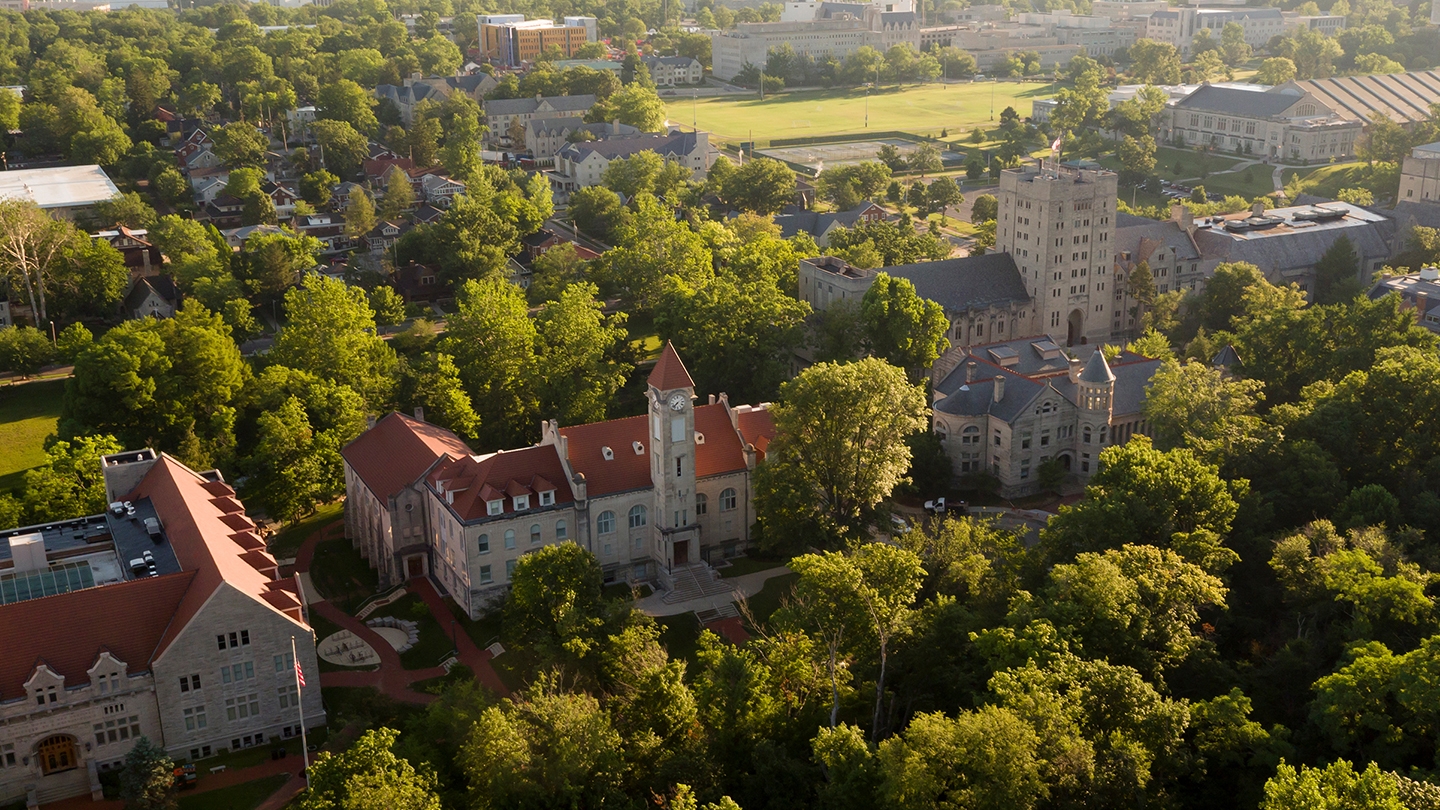
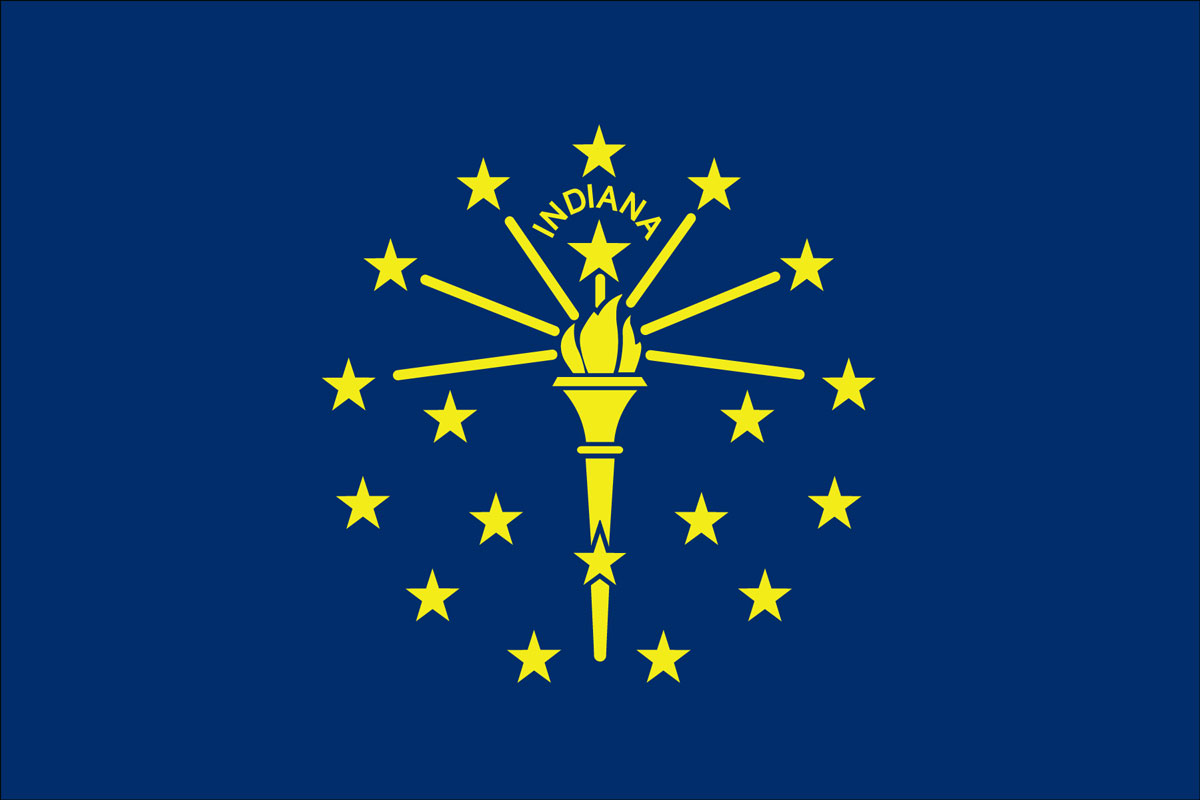
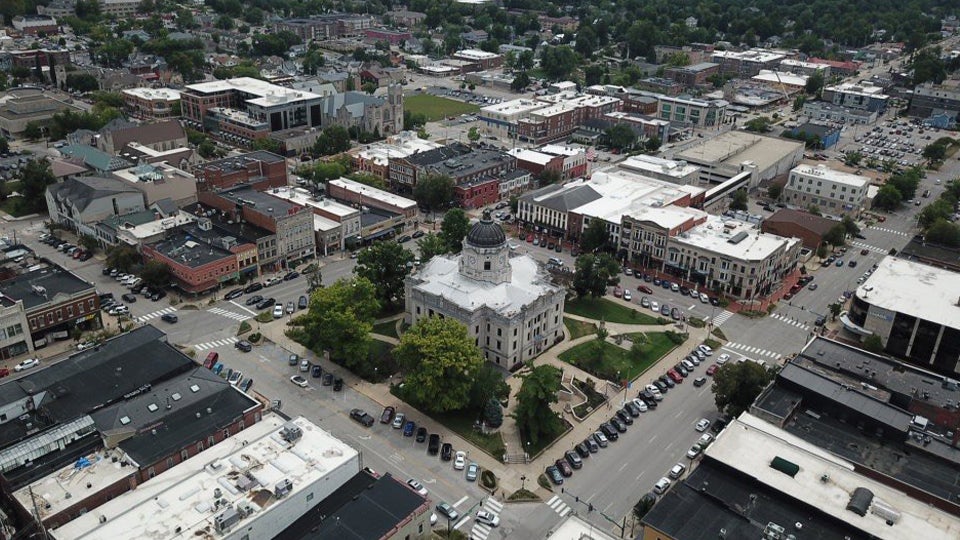

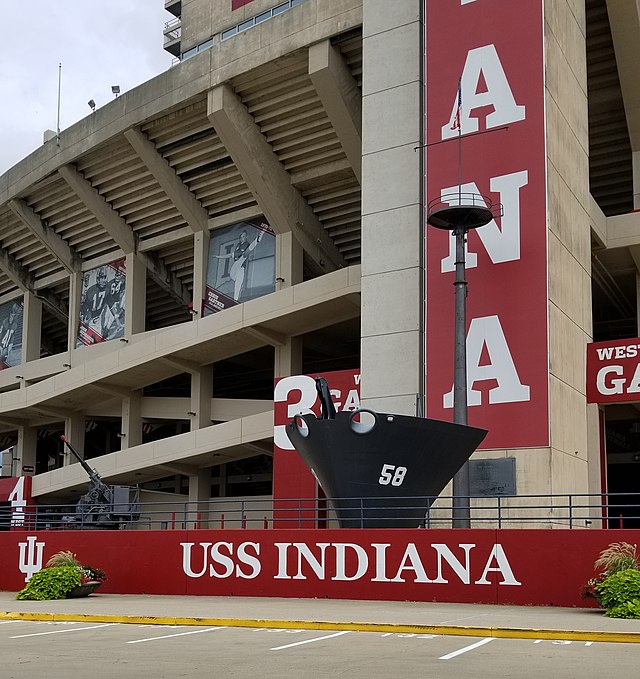
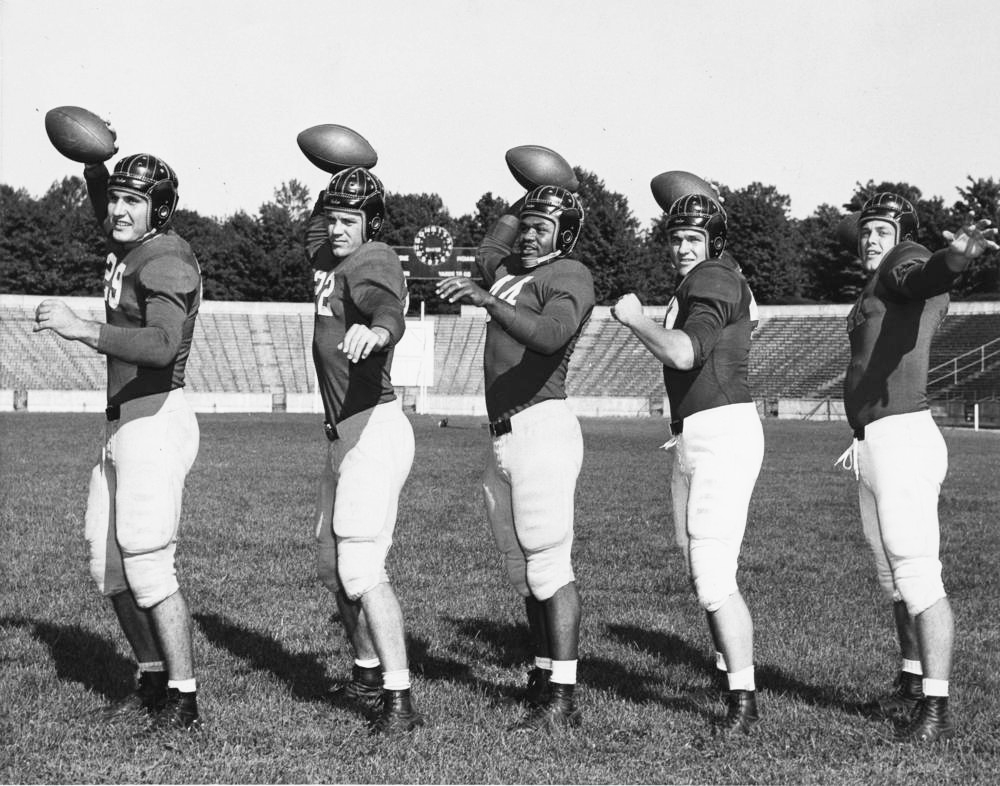
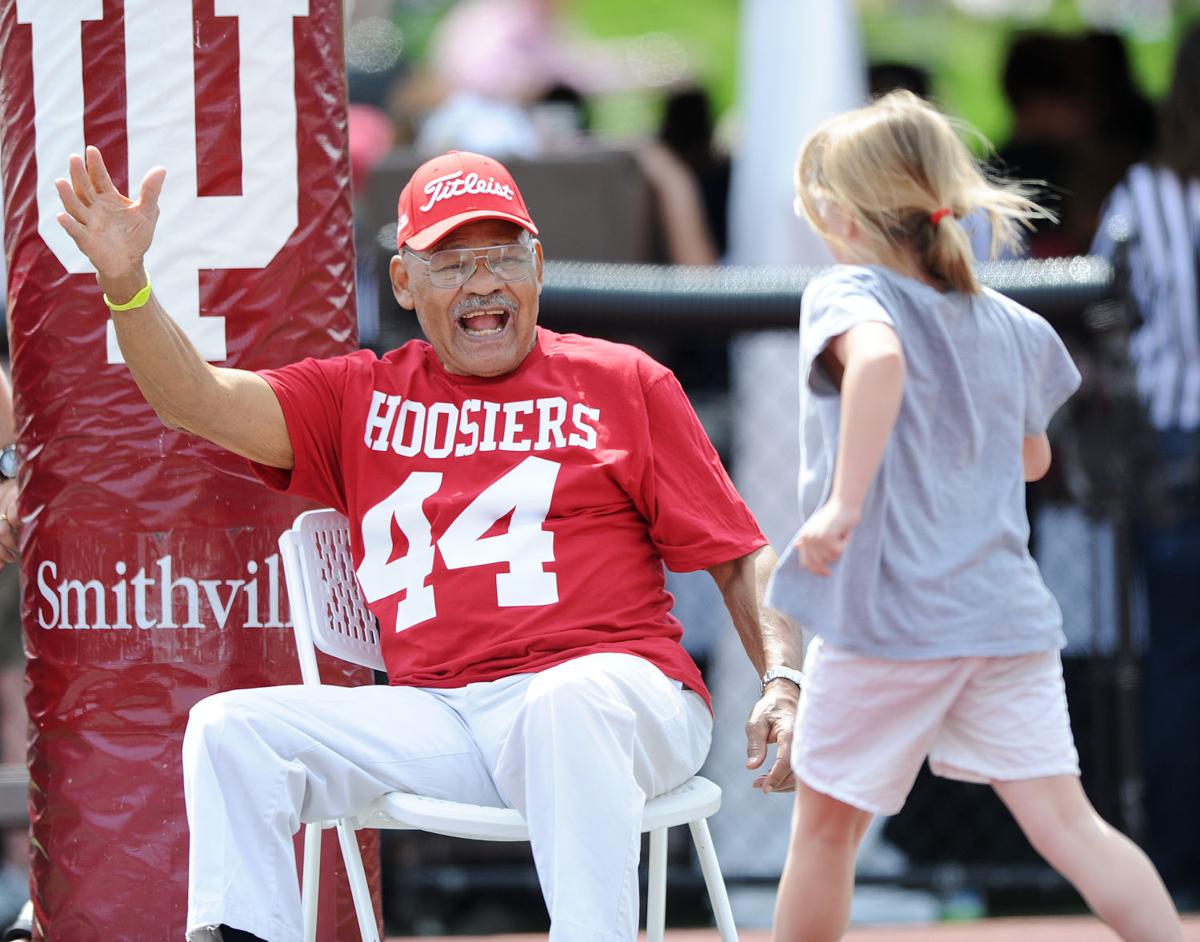

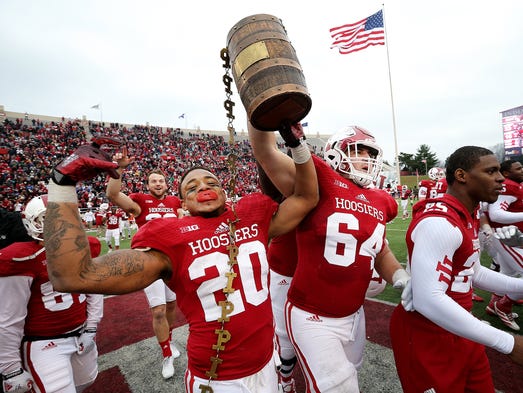
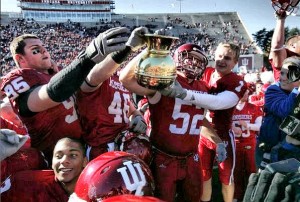





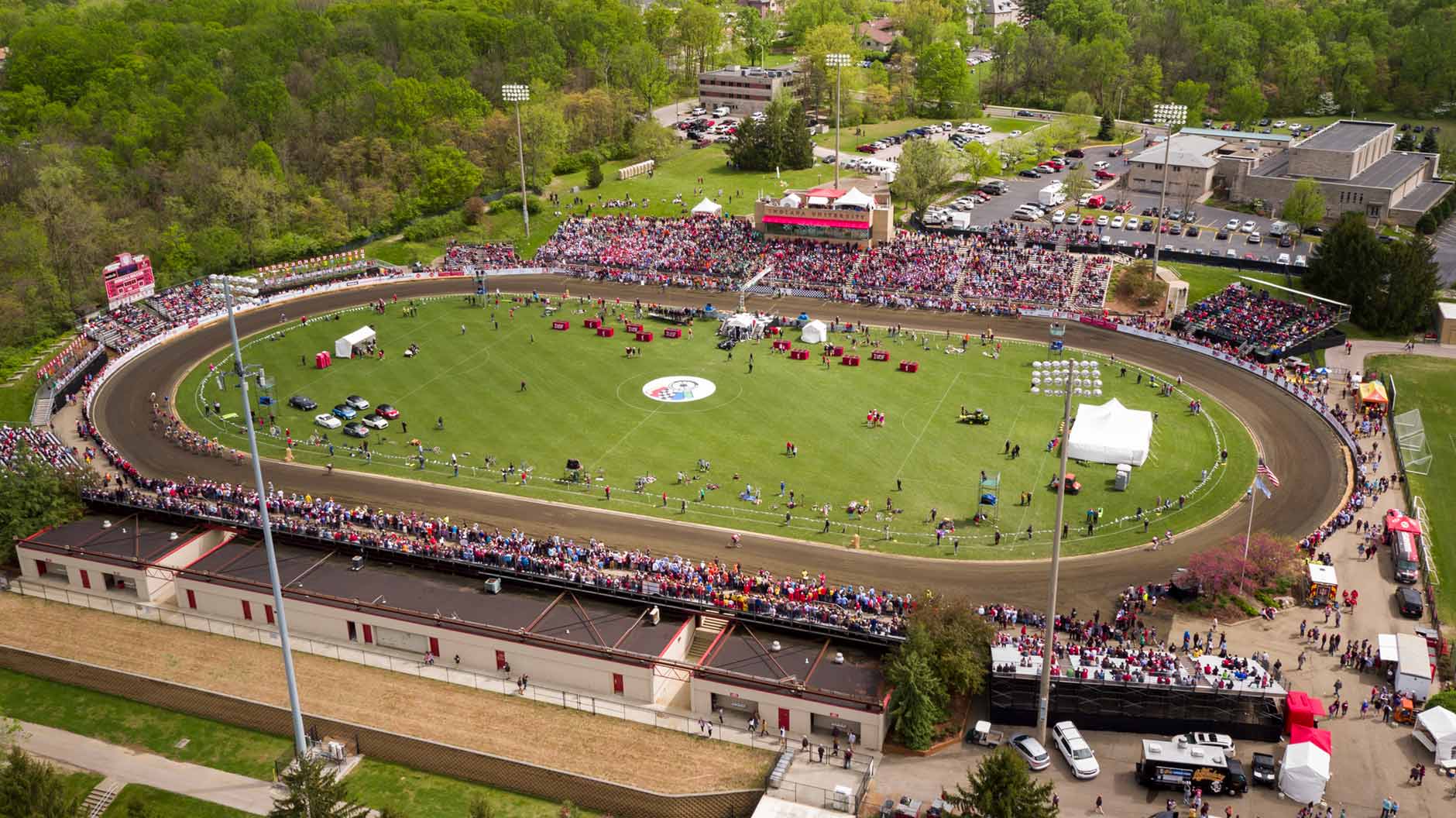


No comments:
Post a Comment